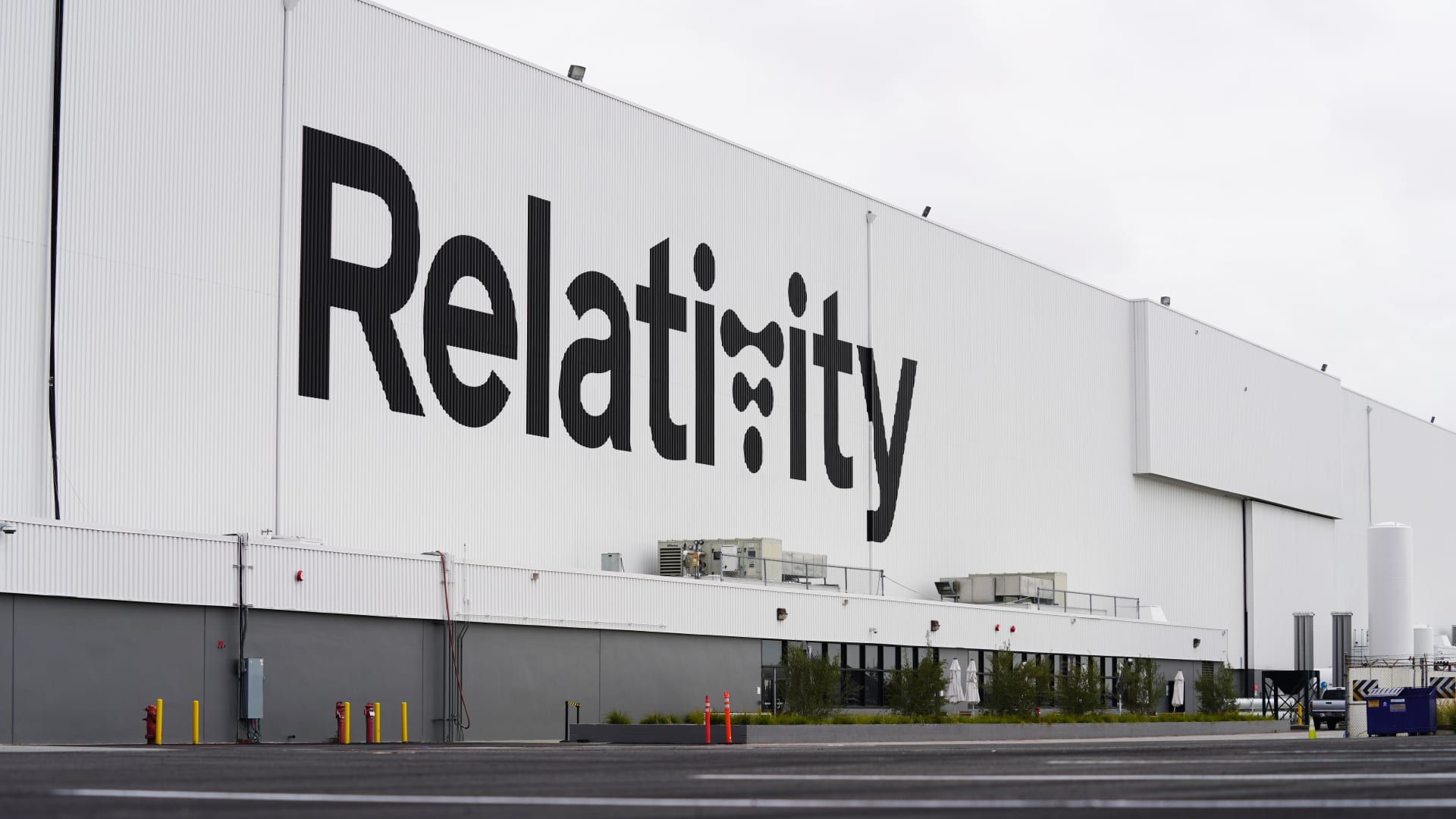Inside the ‘Wormhole,’ Relativity Space’s monster factory 3D-printing reusable rockets

The exterior of “The Wormhole” factory.
Relativity Space
LONG BEACH, California – It was a few days into the new year yet Relativity Space’s factory was anything but quiet, a din of activity with massive 3D printers humming and the clanging of construction ringing out.
Now about eight years on from its founding, Relativity continues to grow as it pursues a novel way of manufacturing rockets out of mostly 3D-printed structures and parts. Relativity believes that its approach will make building orbital-class rockets much faster than traditional methods, requiring thousands less parts and enabling changes to be made via software — aiming to create rockets from raw materials in as little as 60 days.
The company has raised over $1.3 billion in capital to date and continues to expand its footprint, including the addition of more than 150 acres at NASA’s rocket engine testing center in Mississippi. Relativity was named to CNBC’s Disruptor 50 last year.
The company’s first rocket, known Terran 1, is currently in the final stages of preparation for its inaugural launch from Cape Canaveral in Florida. That rocket was built in “The Portal,” the 120,000-square-foot factory the company built in Long Beach.
The inside of “The Wormhole” factory in Long Beach, California.
Relativity Space
But earlier this month CNBC took a look inside “The Wormhole:” The more than one-million square foot facility where Boeing previously built C-17 aircraft is where Relativity now is filling in with machinery and building its larger, reusable line of Terran R rockets.
“I actually tried to kill this project several times,” Relativity CEO and co-founder Tim Ellis told CNBC, gesturing to one of the company’s newest additive manufacturing machines – this one given an internal codename “Reaper,” in reference to the StarCraft games — which marks the fourth generation of the company’s Stargate printers.
A closeup look at one of the company’s “Reaper” printers at work.
Relativity Space
Unlike Relativity’s prior Stargate generations, which printed vertically, the fourth generation ones building the main structures of Terran R are printing horizontally. Ellis emphasized the change allows its printers to manufacture seven times faster than the third generation, and have been tested at speeds up to 12 times faster.
The scale of one of the Stargate “Reaper” printers.
Relativity Space
“[Printing horizontally] seems very counterintuitive, but it ends up enabling a certain change in the physics of the printhead which is then much, much faster,” Ellis said.
A pair of the company’s “Reaper” 3D-printers.
Relativity Space
So far, the company is utilizing about a third of the cavernous former Boeing facility, where Ellis said Relativity has room for about a dozen printers that can produce Terran R rockets at a pace of “several a year.”
For 2023, Relativity is focused on getting Terran 1 to orbit, to prove its approach works, as well as demonstrate how “fast we can progress the additive technology,” Ellis said.
“Given the overall economy, we’re obviously being very scrappy still, and making sure we’re delivering results,” he added.
The company’s Terran 1 rocket stands on its launchpad at LC-16 in Cape Canaveral, Florida ahead of the inaugural launch attempt.
Trevor Mahlmann / Relativity Space
Correction: A previous of this story misstated the speed the company’s 3D-printers had been tested.